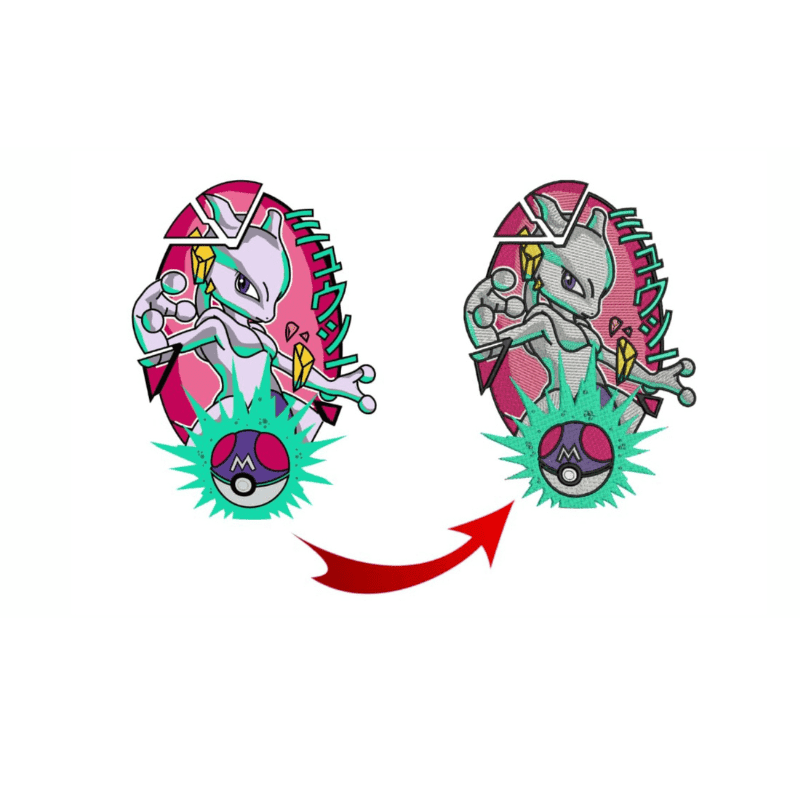Mastering the Embroidery Digitizing Refine: Your Ultimate Overview
Embroidery digitizing is a careful craft that calls for precision and experience to equate detailed designs into electronic layouts for device needlework. As artisans begin on this trip to master the embroidery digitizing procedure, an extensive understanding of the essentials sets the foundation for quality. Beyond the simple expertise lies a world of sophisticated software, specialized devices, and nuanced strategies waiting to be discovered. By delving into the nuances of digitizing, one can unlock a world of innovative opportunities and boost their needlework tasks to new heights.

Understanding Embroidery Digitizing Essentials
Needlework digitizing basics develop the structure whereupon detailed designs are translated into machine-readable styles for specific sewing. This initial action in the embroidery digitizing process is important for making sure that the last stitched item is a faithful representation of the original style. Understanding needlework digitizing fundamentals includes grasping key principles such as stitch types, stitch direction, thickness, padding, and pull compensation.
Sew kinds play an important role in determining the aesthetic and textural result of the embroidered layout. By choosing the suitable stitch kind, whether it be satin, fill, or running stitch, digitizers can attain the preferred effect and boost the general quality of the needlework. Additionally, sew instructions influences the circulation and dimension of the design, while thickness figures out the spacing and insurance coverage of the stitches.
Moreover, underlay sewing supplies stability to the style by securing the textile and stopping distortion during the needlework procedure. Pull settlement is one more necessary factor to consider to combat the natural propensity of textile to agreement when sewn. Understanding these needlework digitizing basics is fundamental for creating professional-quality embroidered items.
Choosing the Right Digitizing Software Program
Choosing the appropriate digitizing software is a critical choice that significantly affects the efficiency and quality of the needlework digitizing procedure. Digitizing for Embroidery. When selecting the right digitizing software application, it is important to consider elements such as the complexity of layouts you plan to create, the user-friendliness of the software application, the degree of customer support supplied, and the compatibility with your needlework maker
There are various digitizing software application choices readily available on the market, varying from standard programs for newbies to innovative software program for professional digitizers. Some popular options include Wilcom EmbroideryStudio, Hatch Embroidery Software Application, and PulseID. These software application plans supply a vast variety of devices and functions to aid you develop detailed designs easily.
Before making a decision, it is a good idea to check out the different software application alternatives with complimentary tests or trials to figure out which one finest matches your demands. In addition, checking out evaluations and seeking suggestions from seasoned digitizers can provide important insights right into the toughness and weaknesses of each software (Digitizing for Embroidery). By thoroughly evaluating your requirements and comparing the features of different digitizing software, you can make an informed selection that boosts your needlework digitizing process
Digitizing Devices and Strategies

Optimizing Style Setup for Embroidery
Mastering the complexities of design setups is essential in attaining optimal outcomes in the needlework digitizing process, building upon the foundation laid by comprehending digitizing devices and techniques. When optimizing layout settings for embroidery, it is important to think about visit this page variables such as stitch type, density, underlay, draw payment, and enrollment. Stitch type choice impacts the overall look of the layout, with alternatives like satin, fill, and running stitches supplying various structures and results. Density refers to the spacing and thickness of stitches, influencing the layout's protection and toughness. Correct underlay stitching offers stability and prevents material distortion, especially for her response intricate designs or on stretchy materials. Pull payment readjusts for fabric stretch during sewing, making certain precise style duplication. Enrollment settings align different aspects of the layout accurately, preserving total design stability. By fine-tuning these design settings, embroiderers can enhance the top quality and precision of their stitched creations.

Troubleshooting Common Digitizing Issues
When experiencing usual digitizing issues during the needlework procedure, it is important to understand the origin and carry out effective services promptly. One typical problem is stitch thickness issues, where stitches might be as well thick, triggering the textile to pucker, or too thin, leading to spaces in the layout. Adjusting the stitch thickness setups in the digitizing software application can aid settle this issue.
One more constant difficulty is string breaks during the embroidery procedure. This can take place due to different factors such as incorrect tension setups, boring needles, or making use of low-quality thread. Making certain appropriate maintenance of the needlework equipment, including routine needle adjustments and stress changes, can reduce the incident of string breaks.
Furthermore, layout enrollment mistakes can result in misaligned aspects within the embroidery style. Checking the design alignment in the digitizing software program and making necessary modifications important source prior to sewing can aid in avoiding this issue. By attending to these common digitizing concerns quickly and successfully, you can ensure a smoother embroidery procedure and high-quality finished items.
Conclusion
In final thought, understanding the needlework digitizing procedure needs a solid understanding of the basics, the best option of software, and expertise of tools and strategies. Enhancing style setups and repairing usual digitizing issues are important steps in guaranteeing premium needlework outcomes. By complying with these actions carefully, one can accomplish accuracy and effectiveness in the digitizing process.